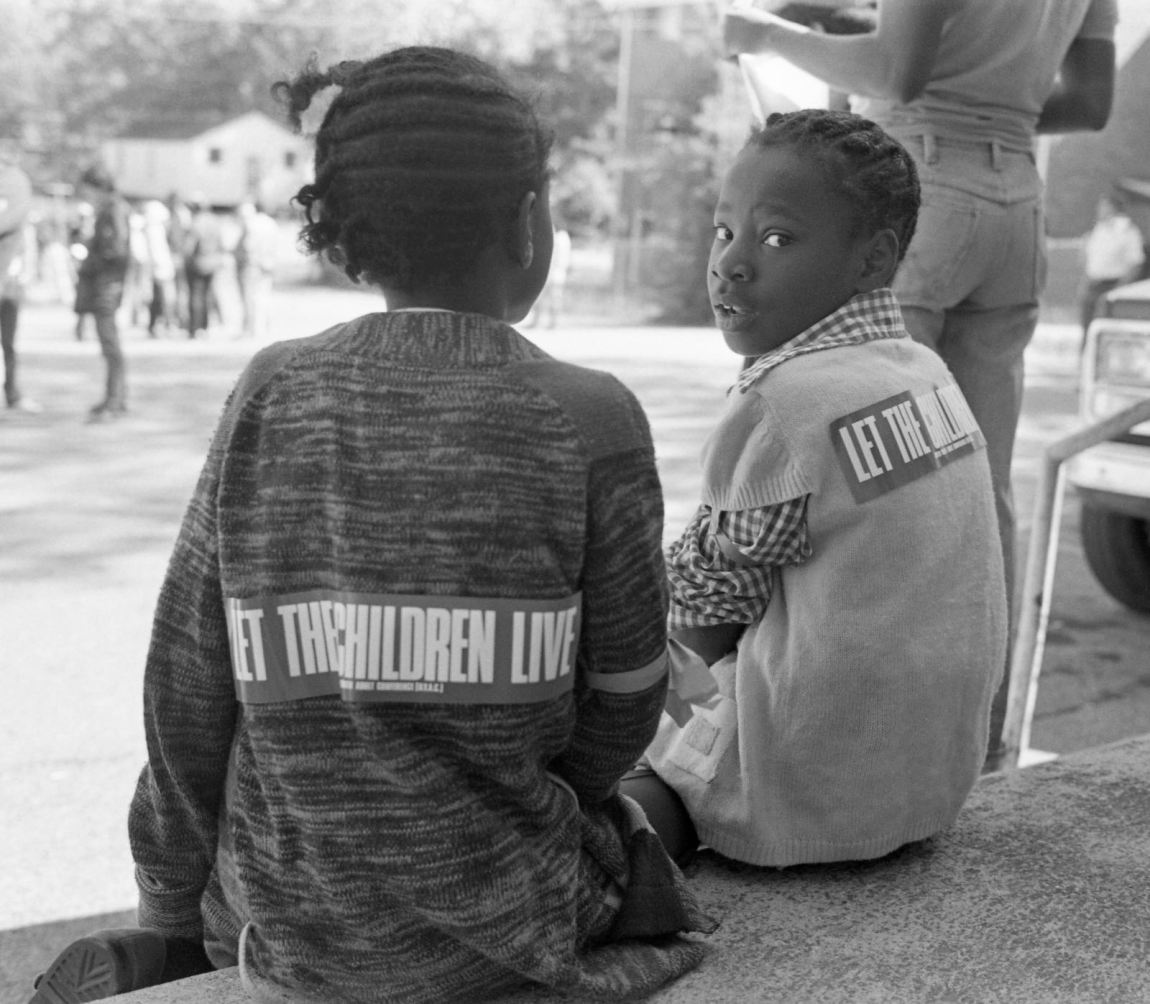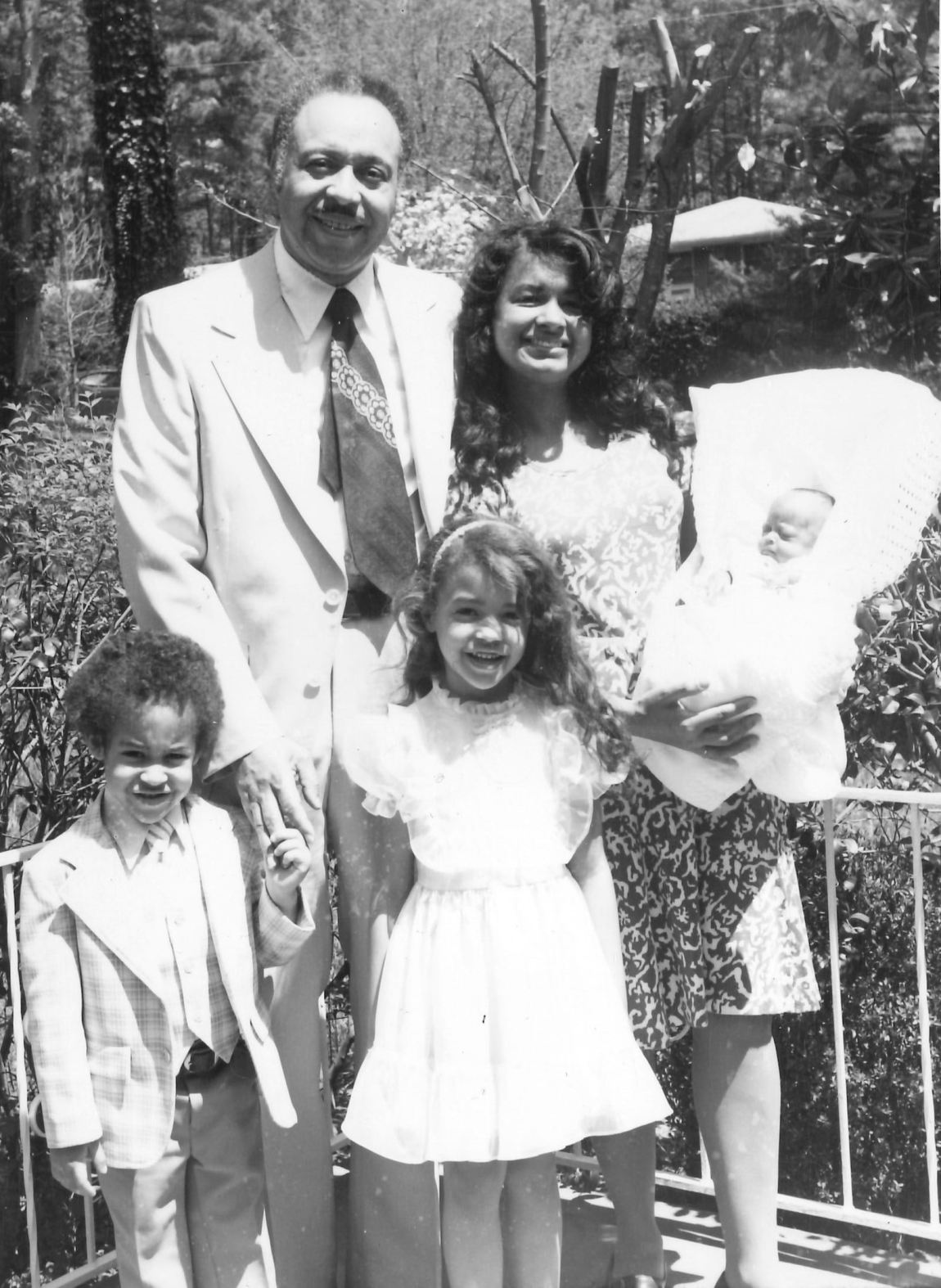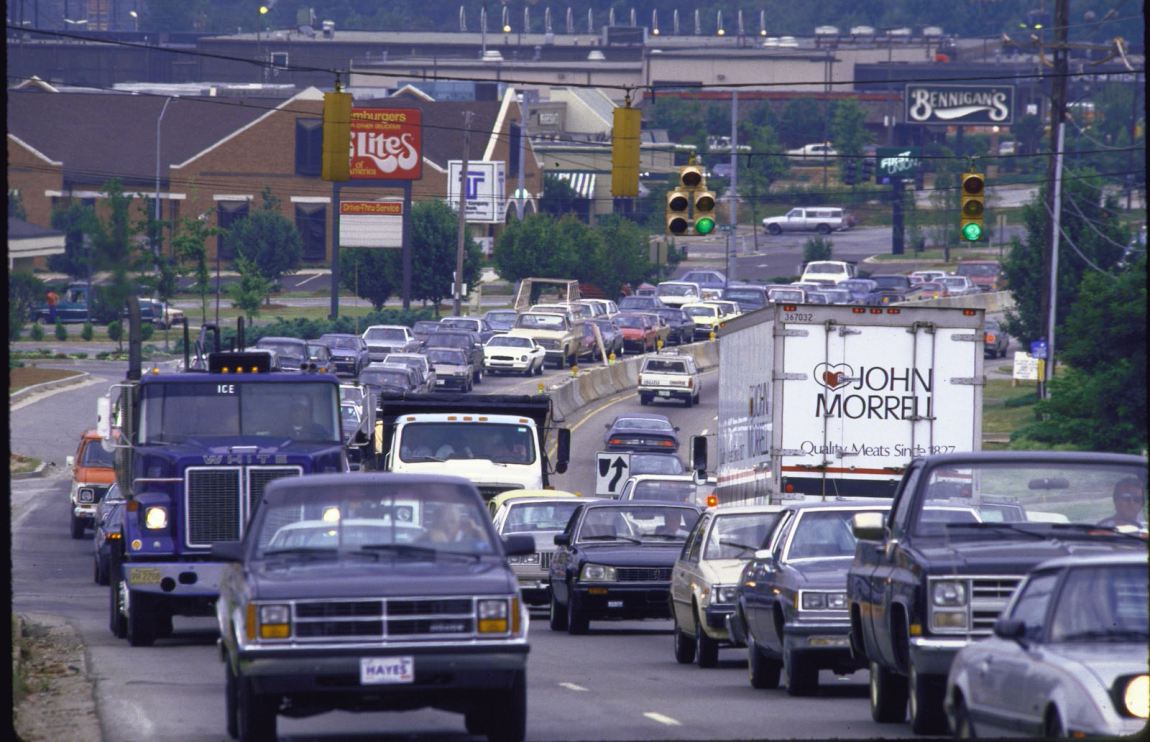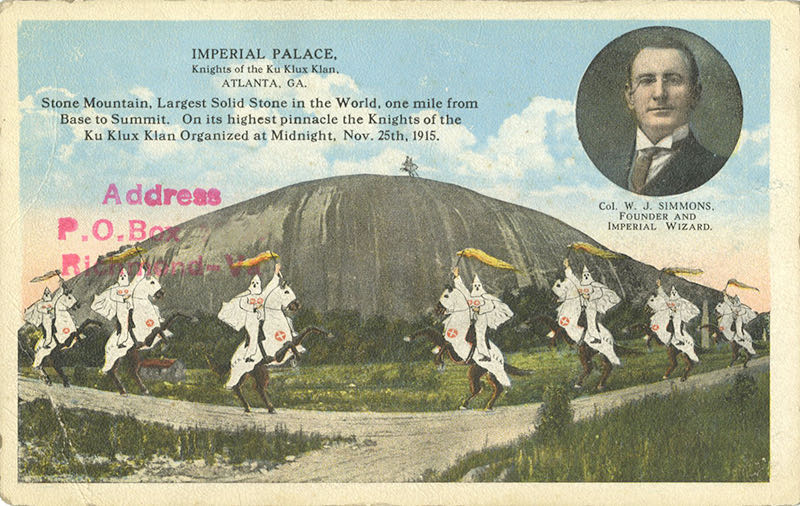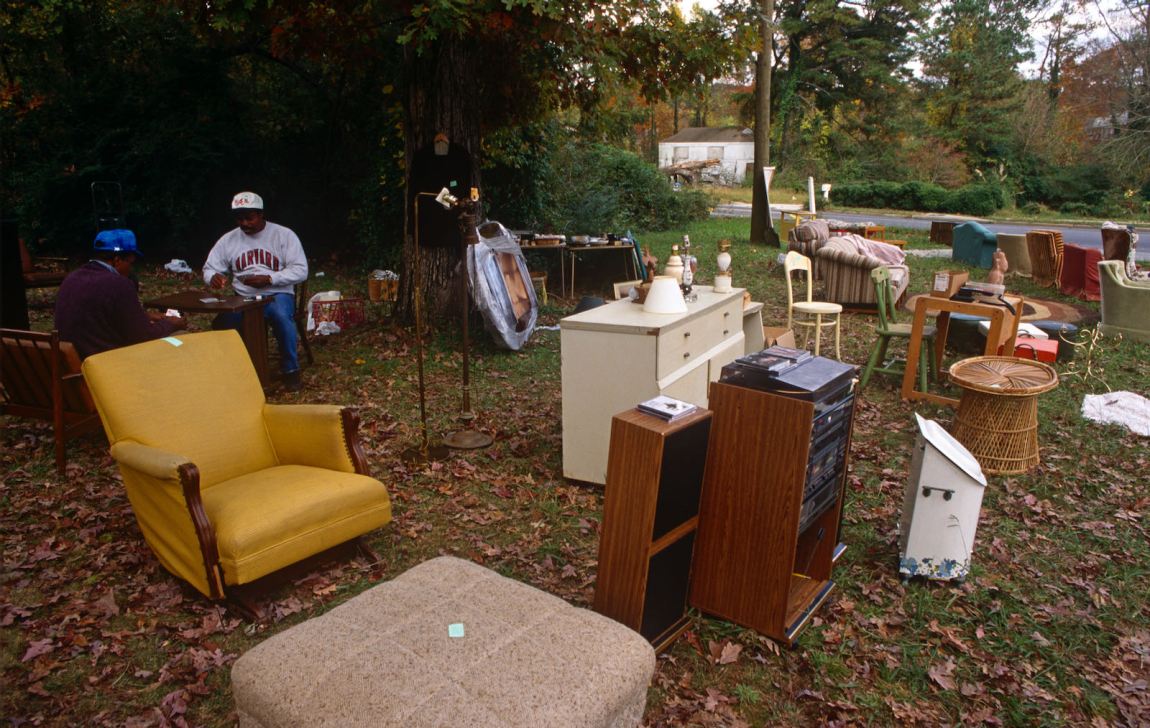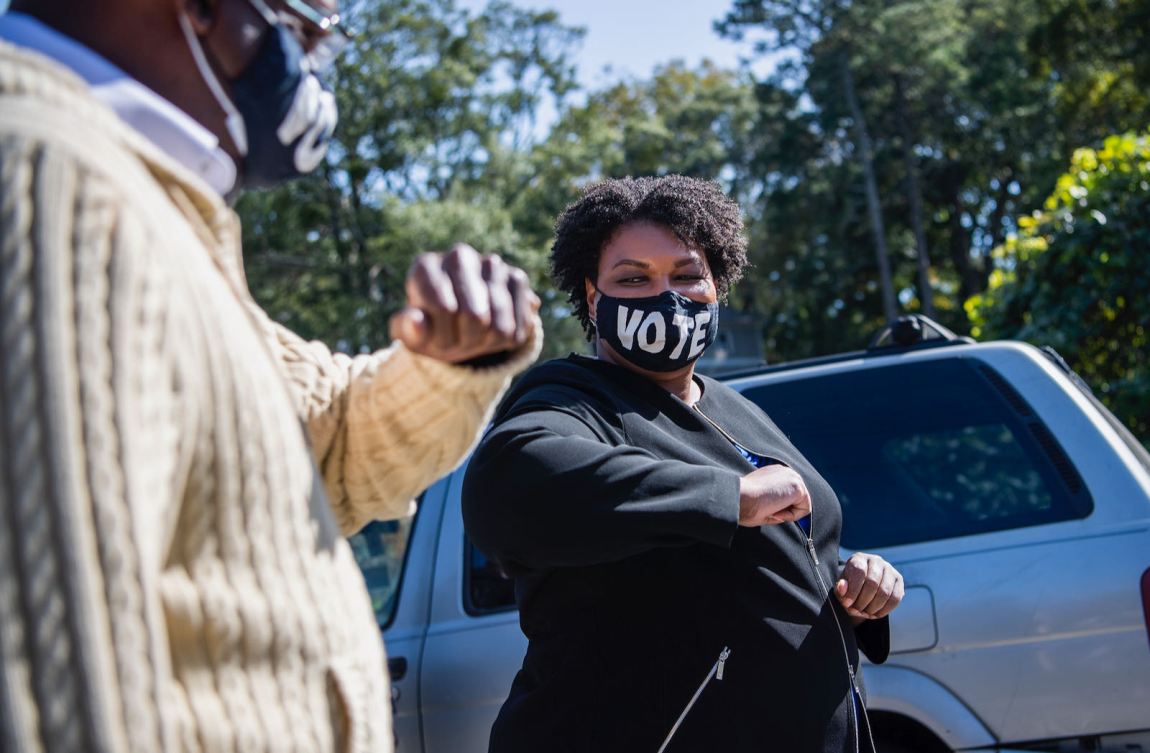It’s 3:30 AM Friday after Election Day, and I keep nodding off in my phone’s harsh glare, my finger hovering over the refresh button. Screw Pennsylvania and Arizona. Same for Texas—my home of the last twenty years has already let me down with its perennial but ever-postponed promise of turning purple. Now, it’s all about Georgia. Specifically, my hometown of Atlanta. More specifically, the inner-ring suburbs to the city’s south and east, where I grew up. On the “Judgmental Map of Atlanta” conceived by twenty-first-century hipsters and circulated on social media, my childhood stomping grounds are part of the area designated “Twerk Videos.”
I’m trying to restrain myself from sounding off, so I keep posting Ludacris videos and OutKast memes in anticipation of some sort of miracle. Finally, at 3:37 AM, there it is on The New York Times results page: Georgia has flipped from red to blue, thanks to the count in from Clayton County, another suburban area just south of downtown and, fittingly, part of the late John Lewis’s congressional district.
For the book I’m currently working on, I have been thinking a lot about the intertwined histories of race and property, power and belonging. And in recent years, suburbs have emerged as a prime battleground for struggles between Black folks and white folks over who has right of way in this country. Cops keep killing Black people in places like Ferguson, Missouri and Atlanta, Georgia, and they redouble their violence when we pour into the streets to demand that they stop. Thick plumes of tear gas turn the familiar parking lots of QuikTrip and Wendy’s into alien landscapes. But the suburban race war does not usually rage at such a fever pitch—it’s almost always simmering.
I’ve known this all my life. In 1972, when I was one year old, I moved with my mom, dad, and younger brother to a metro Atlanta neighborhood caught in the throes of white flight. Separate-but-equal was still a guiding principle of that time, even though this was not the Birmingham, Alabama, of Bull Connor. Instead, white Atlantans (and white folks all over the country) transposed the central values of segregation into the tamer and more palatable language of “personal choice,” “tax revolt,” and “property value.” Trumpeting the ideals of individual liberty and local control of resources and services, white residents abandoned Atlanta to an emergent base of Black electoral power and insulated themselves and their tax dollars in lily-white and highly fortified suburban enclaves. In 1960, Atlanta was 60 percent white, 40 percent Black. By 1980, those numbers had reversed, and then some. By 1990, the percentage of Blacks in Atlanta’s population had reached its peak of just over 67 percent.
My parents purchased a home from a white family in Sun Valley, a calm, cheerfully named subdivision. With so many of us streaming into the neighborhood, the family, which had moved there only a few years before, decided it was time for them to cut what they saw as their losses and light out for new, whiter territory.
My siblings and I, together with the rest of the neighborhood kids, claimed every inch of Sun Valley, organized by a circular street with a steep, straighter one that sliced through it, and the muddy trails behind our houses, as an enchanted terrain. One or two white people may still have lived there, but we could go for days, even weeks, without seeing one. When we, now as adults, run into one another in and around Atlanta, we look back fondly on a childhood we recall as idyllic. There were peach trees to climb and muscadines to pluck directly off the vine. The honeysuckles were abundant: all-you-could-slurp.
We knew that, around that time, an elusive serial killer was at large, murdering Atlanta’s Black children at the alarming rate of more than one a month, but we spent all day ripping and running outside anyway, like it was our job. Neighborhood dogs, German shepherds and Doberman Pinschers with names like Duke and Midnight, made a sport of chasing us kids. We were utterly terrified, yet quick to joke that we need only be faster than the slowest among us. We played difficult variations of common games. Cat Ball was just like baseball, except you could also make an “out” by chucking the hard ball at someone’s body and landing a direct hit. I quickly learned that if I knocked the ball over not one, but two, backyard fences, I could make it back to home base without breaking a rib.
Advertisement
Mostly, we rode our bikes. Toward the Candy Lady’s house, where we stocked up on Now and Laters and kosher pickles from the makeshift store in her front room. Or careening, no-hands-no-feet, around the circle and down the hill. I liked to recount to friends the story of how Reggie or Darryl “flipped his handlebars and busted his head open,” although I can admit now that I never witnessed such a thing. All the boys were so graceful and could pop wheelies that went on for the length of our street. Years later, in the late Eighties, after Darryl was found murdered, I would recall his gentle, open face and how he had once stepped in to protect me from another boy who had been trying to persuade me to “play doctor.”
My brother and I would sometimes meet up with our friend Patrick, who lived in Monterey, the subdivision down the street. We’d take turns shooting at the stop sign with his BB gun, then ride our bikes over to the concessions shop at the golf course directly across from Sun Valley’s stately entrance. The golf course would soon be transformed into the site of a Baptist not-quite-megachurch more befitting our middle- and working-class Black enclave. The store clerk was a white man with dirty, blond hair and a dirtier T-shirt whose eyes tracked us with suspicion. But we braved his contempt for the prize of a packet of M&Ms and a can of Sprite. I only used the restroom there if I absolutely had to. If I remember correctly, it was an oddly spacious room with a hole in one of the walls big enough for peeping.
At some point when I was in elementary school, my parents decided to take advantage of DeKalb County’s “Majority to Minority,” or “M-to-M,” busing program and send us to a better-resourced but predominately white school in a suburb to the north (adjacent to where “Bright Whites” meets “Stepford Wives” on the hipster map). Some of my teachers and classmates were warm and encouraging; Mr. Schwartz, the principal, was supportive and, after reviewing my records, allowed me to skip a grade. But on the whole, the atmosphere was shot through with a bewildering tension that I could not yet name.
One openly hostile teacher, Mrs. Lawson, seethed with resentment at my proficiency in language arts. For much of my sixth-grade year, we were locked in an extended showdown: I never missed a quiz question, and she showered me with a praise so phony and effusive that it hardly masked her intense desire for my failure. A day came in March that year when I faltered and got something wrong. Mortified, I tried to get the girl with whom I had swapped papers for grading to change my answer and mark it correct. But we were sloppy, and Mrs. Lawson caught us, taking delight in exposing me for the ten-year-old fraud I was. I remember marching behind her to Mr. Schwartz’s office, transfixed by the shimmery forest-green velour of her upscale tracksuit.
As a teacher at a highly rated public school, she knew it was her job to defend white property values—in this case, the white kids’ claim to a position at the head of the class. She was no better than the parents, one of whom made sure to tell my brother that he alone was not invited to her son’s eighth birthday party because she was “worried about what the neighbors would think.” Each day, after school, my brother and I and the sprinkling of other Black kids walked the path to our bus as if it were a gangplank. The county may have assigned us the “short bus” because of our relatively small numbers, but our classmates derided us for what they perceived as the “disability” of our blackness.
For us, the bus was a world unto itself. Setting out before sunrise, it wound its way through the Eastside, picking up the cast of characters who, for three years, would be my fellow travelers in this weird experiment in token integration. My brother and I were among the earliest to board, followed swiftly by Patrick. Next up were LaVetta, a big-boned and confident middle-schooler, who wore fuzzy sweaters and a jheri curl before the style had really caught on, and her little sister, LaRuth, who looked like Janet Jackson as Penny on Good Times. She could sing, too. I remember pangs of envy tearing through my chest at her perfect rendition of Stacy Lattisaw’s “Love on a Two-Way Street.”
A few more twists and turns, and we found ourselves in front of an apartment building that was possibly public housing. Out swaggered Damon, my first crush, a boy I perceived as exotic because his surname ended in a vowel. He was also, somehow, from New York City and regaled us with stories of huge parties where people spit rhymes at one another and spun like tops on flattened cardboard boxes. “Ho-tel, Mo-tel, Hol-i-day Innnnnnn!!!” we chanted, pretending to be the Sugarhill Gang as the bus made its way up I-285, the kudzu and concrete scenery streaming past us. Damon also told us about friends-of-friends who, high on a mysterious substance called “angel dust,” had spread their arms like wings and dived headfirst from tall buildings. Even now, when I take the shortcut from Flat Shoals to Candler Road, I can envision Damon tossing fat pencils from the bus window, trying to gauge how far into the woods he could make them fly.
Advertisement
When we climbed those bus steps, after the small and large indignities of the school day, the hiss of the hydraulic door hit us like a sigh of relief. One by one, we high-fived our bus driver, an older white man named Mr. Teems. On most days, he had purchased a large bag of Blow Pops. As we inched back down the highway in the midafternoon traffic, he fired trivia questions at us, doling out suckers when we answered correctly. We grabbed them out of the air and tore off the wrappers. Lacking patience and willpower, I could never wait for the hard candy shell to dissolve but always bit right through it, my bubble gum crunchy and thick with cherry-flavored shards.
I always appreciated Mr. Teems’s kindness, but, remembering him now, I can see more clearly the scope of his intervention. M-to-M was the county’s latest plan for implementing the quarter-century-old mandate of Brown v. Board, and numerous constituencies—from parents’ and teachers’ associations to county school officials and district courts—had haggled over the details of its constitutionality and expense. In fact, they still do. But no one, it seemed, had put much thought into the effect these programs had on us, the kids who trundled back and forth between our Black suburban homes and our white suburban schools. Mr. Teems stepped into the breach with humor and care and did what he could to lighten our daily burdens. Years later, just after I had received my college acceptance letter, my parents and I ran into Mr. Teems at South DeKalb Mall. When we told him the news, his face beamed with pride. “Well,” he said. “There was never a doubt in my mind!”
*
During the past thirty-eight years, the demographics of Atlanta and its metro area have shifted quite a bit, as this election cycle has made clear. The preparation for the city’s successful bid for the 1996 Olympic Games displaced poor Black people from the city, and then the subprime mortgage crisis of 2008 decimated the wealth of many of those who’d managed to stay. With recent investment in projects, such as the Atlanta BeltLine, a mixed-use green space that skirts the city on a formerly abandoned railroad track, a younger population, both whiter and more ethnically diverse, has claimed the urban core. Within the city limits, the proportion of us African Americans has fallen to just over half the population, the lowest percentage in decades; instead, we have fanned out into the surrounding counties, pushing the white-flight families of previous decades even farther into Georgia’s hinterlands.
In the early 2000s, my empty-nester parents moved away from Sun Valley in DeKalb County to a subdivision in Gwinnett County, an outer-ring suburb farther to the east and just beyond the borders of the Judgmental Map. Their new neighborhood is nestled in the shadow of Stone Mountain, the world’s largest Confederate memorial, with a 90-by-190-foot bas-reliefof Jefferson Davis, Stonewall Jackson, and Robert E. Lee carved into its northern facade. The geological wonder is infamous for being the birthplace, in 1915, of the modern Ku Klux Klan. Well into the mid-twentieth century, the group held ritual cross burnings on the mountain’s bald pate.
When I was a child, we often visited the adjacent park, spiraling down the only waterslide around into the manmade lake. We tried to ensure we left before sundown. I recall a caravan of aggressive-looking pickup trucks revving their engines at us one evening to make sure we and other Black visitors hustled our asses back to South DeKalb, where we “belonged.”
Today, the area is astonishingly diverse. In Gwinnett County, there is a more than 70 percent chance that two people chosen at random will be of different races or ethnicities. Students attending its public school system hail from more than 180 countries and collectively speak more than a hundred languages. A couple of years after my parents moved there, my sister and I, each with our soon-to-be husbands, grabbed a late-night snack at the local Applebee’s. At the next table, a group of white men with trucker caps watched college football on the TV above the bar, offering loud commentary in their distinctively rural twang. To our other side, an elderly white man chatted quietly with a young boy I took to be his biracial grandson. A young Asian couple walked in.
Underneath this veneer of racial harmony, however, battle lines are constantly drawn and redrawn. The steady trickle of Black homeowners into our new subdivision has yielded a bumper crop of “For Sale” signs in our white neighbors’ yards, setting in motion a self-fulfilling prophecy of falling property values.
Just as it had in previous decades, the neighborhood pool has become ground zero for interracial strife. I roll my eyes when my mother asks us to take our IDs when we go, even for a short swim. “But they know who we are!” I shoot back. “And y’all pay your dues every year. On time!” There are minor frictions: the insistence that we sign our names in the soggy notebook or the way white eyes linger over sunlit dark skin. Sometimes, these momentary slights ignite larger flare-ups, like the time my sister and a white teenager spent thirty minutes or so passive-aggressively switching the radio dial back and forth between contemporary country and R&B.
White residents who haven’t fled back to the city or to farther-flung suburbs continue to hold fast to the well-worn reins of local control. They pull their children from public schools in favor of improvised charter arrangements or homeschooling. They organize to protest the construction of rental apartments, which signal an influx of lower-income Black and Brown residents. Their officials implement racial profiling and what recent studies have dubbed “poverty capitalism”: over-penalizing minor infractions and entrapping the area’s poorest residents in a quagmire of warrants, fines, and fees. They disenfranchise Black citizens by limiting the number of polling locations and otherwise suppressing our vote.
In much of suburban Atlanta, where the infrastructure has failed to keep up with the needs of a growing working-class, carless population, a steep rise in pedestrian deaths has claimed many Black and Brown victims. Nothing screams “you don’t belong” like being made to dodge high-speed traffic on the trek from your home to the MARTA bus stop.
Even so, their new subdivision has been a good place for my parents in their golden years. Pool shenanigans aside, my parents have relished the relative calm and convenience of suburban life. And with each passing year, more and more Black neighbors have arrived. In the couple of years before he passed away, my father received an unanticipated gift when Reverend Settles moved in next door. Before long, he and Dad discovered that they were both ministers. They had run in the same circles as young people in South Carolina and had roots in the AME Church. The two of them spent many long days sitting around in their leather apple caps, trading friendly insults and carrying on like old cronies.
A week after my father’s death, Reverend Settles, just returned from vacation, came over to pay his respects. Distraught and bleary-eyed, I told him I felt I had lost my best friend. His eyes widened: “Your best friend? Well, what about me? What am I going to do with myself?” We both broke into laughter, the first hint of levity I had felt in days.
*
Suddenly, my phone beeps, jarring me awake again. I see a text from my mom, who has also been up all night eagerly tracking the Georgia returns. Like me, she knows that in a world marked by gentrification and white flight, “changing demographics” aren’t always what they are cracked up to be, and “diversity” is often just a snapshot of a single moment in longer, more nefarious processes. She wonders, anxiously, “Will we pull this off?”
She is talking about this election, but she’s also looking ahead. As someone who participated in some of the earliest sit-ins of the civil rights movement while a college student in North Carolina, she believes in the ability of astute organizers, such as Stacey Abrams and the thousands of others who have mobilized Black voters, to produce lasting change—in the balance of the electorate, but also for Black people in their everyday efforts to claim space. But she also knows that every inch of progress will be contested in an updated variation on what segregationists of old boldly dubbed “massive resistance.” Those committed to white flight are a destructive lot. In ways large and small, they would rather destroy their own property than cede ground to their Black fellow citizens.
I have just watched an early press conference with the Georgia secretary of state, and I tell Mom that the biggest cache of votes yet to be counted—3,500 of them, in fact—are in her very own Gwinnett County. I begin to imagine her face, beaming at the prospect of her precious absentee ballot becoming a deciding factor in this historic election. She is less excited than I expect.
“Ugh,” she writes, elevating her grief to all caps: “I DON’T KNOW ABOUT THIS COUNTY???”
“Well,” I tell her. “We’ll see…”


